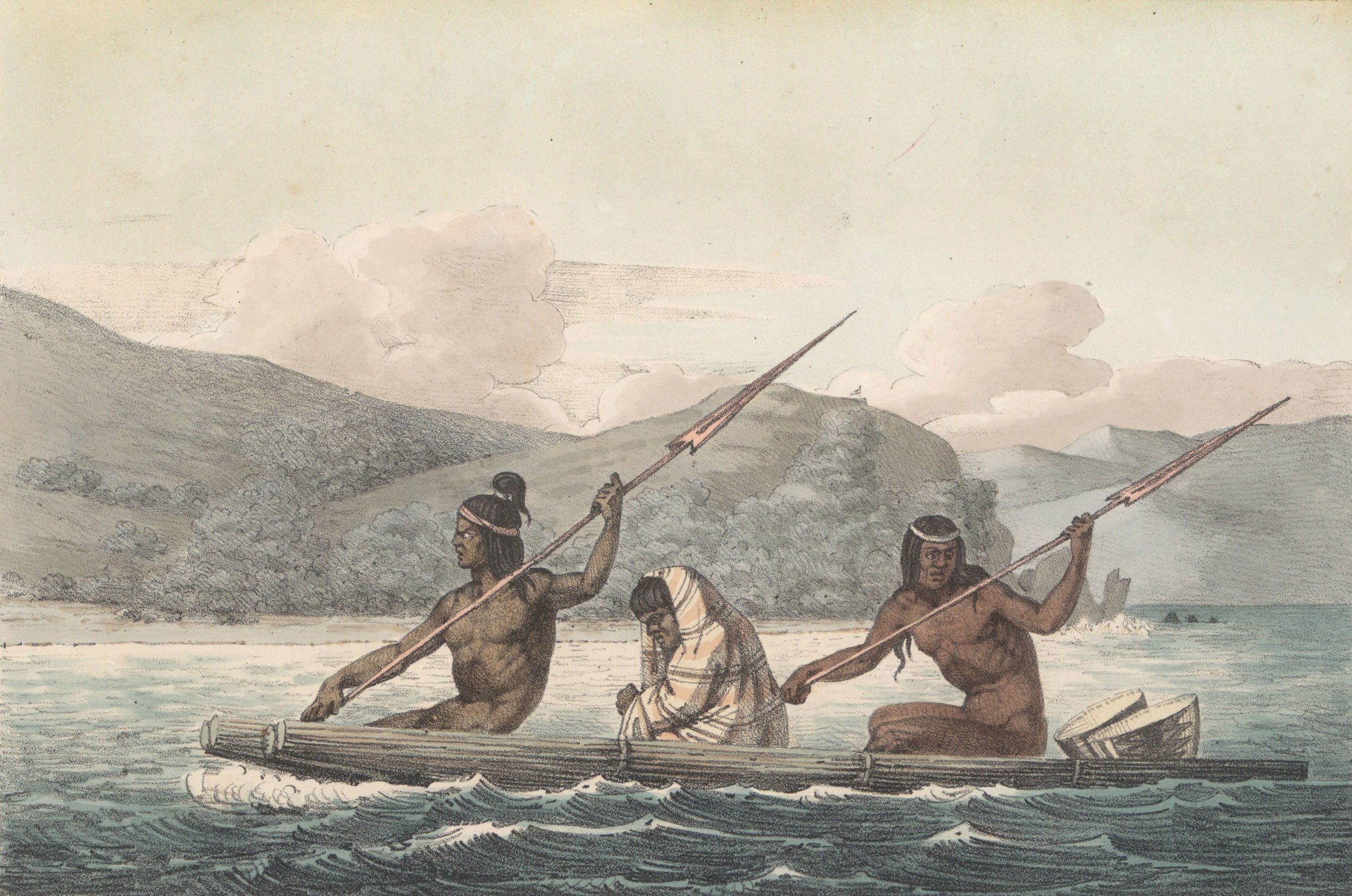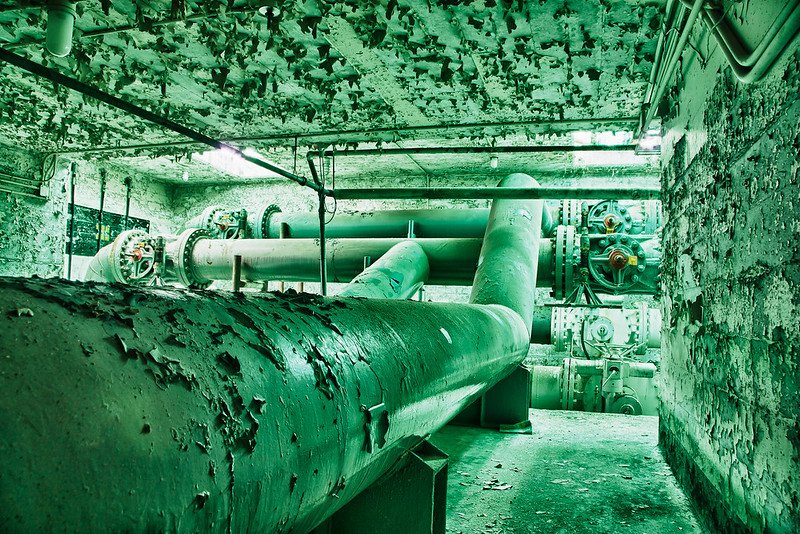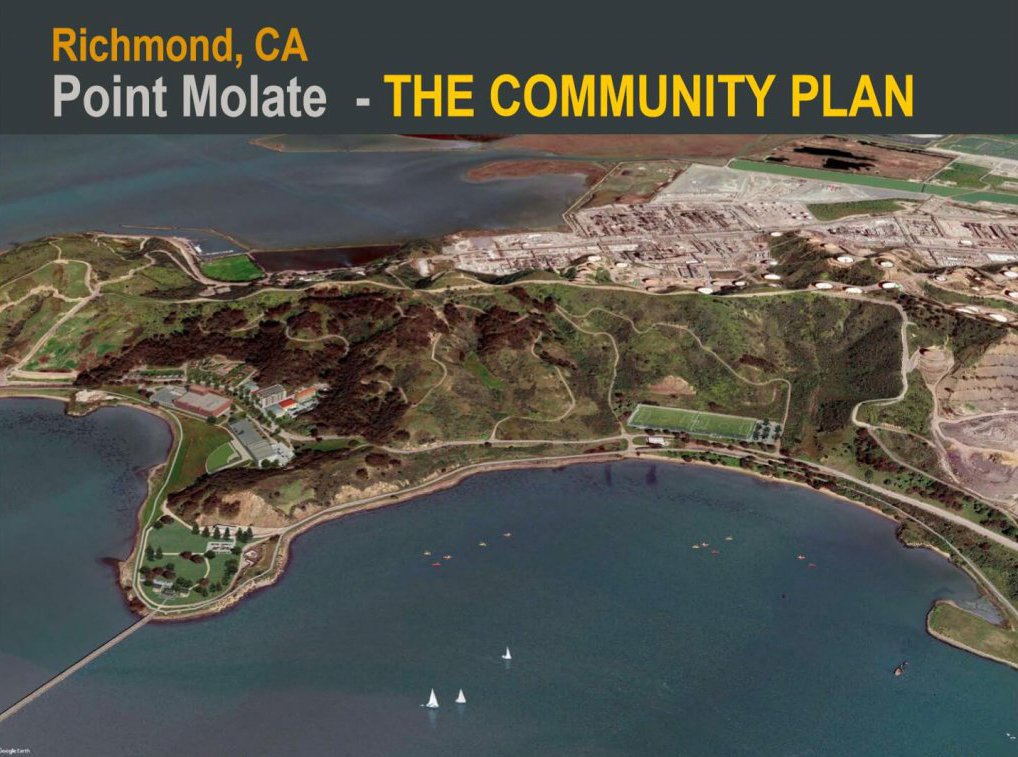A significant cultural history



The Ohlone
Thousands of years ago, the first humans to occupy Point Molate were members of the Ohlone Native American tribe. They spoke the Chochenyo language and lived in villages that extended all along the East Bay. The Ohlone constructed shellmounds that served as both ceremonial places and burial sites. Some shellmounds were taller than 60 feet, and fires on the tops served as navigational markers. At Point Molate, there are remains of shellmounds at undisclosed locations that document Native American use of the area.
The Spanish
During the Spanish period, most Ohlone lived as captives within the mission system, where their numbers were reduced by diseases, starvation, and genocide. Point Molate became part of a Spanish rancho.
The Chinese shrimp camp
Point Molate eventually became the site of a Chinese shrimp camp at the location of the current Beach Park. The shrimp were boiled in huge cauldrons and transported, mostly to San Francisco, though dried shrimp meal was also exported to China. In 1911, the type of nets used for shrimping were banned by the California legislature, and the Point Molate shrimp camp ceased activity by 1912.



Oil refinery
In 1901, the Pacific Coast Oil Company was established on the opposite side of the ridge from Point Molate. The name was changed to Standard Oil of California in 1906, and in 1984, the name was changed to Chevron.
Winehaven
After the earthquake of 1906 broke most of the wine bottles in San Francisco, the California Wine Association purchased Point Molate. The brick warehouse with battlements along the roofline was built, along with staff housing, and for a while, Point Molate was the site of the largest winery in the United States (some say the world). But then prohibition threw the wine industry into an abrupt decline. In 1978, the Village of Point Molate (#7800058) was listed on the National Register of Historic Places.
The US Navy
Enter World War II and the US Navy. In 1941, the Navy acquired Point Molate for use as a fuel depot. The Navy built a deepwater pier that is still in place today, and a pipeline was run over the hill from the Chevron refinery. You can still see the pipeline. In addition, huge storage tanks were dug into the hillsides. Point Molate supplied the Pacific Fleet during World War II. But the facility was declared surplus and slated for closure in 1995. By 2003, the entire tract had been transferred to the City of Richmond for $1.00. Point Molate was transformed from a military site to public land, belonging to the people of Richmond.
The City of Richmond
The idea of Point Molate as parkland began with the initiation of the transfer process from the Navy to the City of Richmond in 1995. As is common for disadvantaged communities like Richmond, powerful players, motivated by potential profits, had other ideas. The first idea to gain traction with the City Council was to build a mega-casino at Point Molate. The casino project was put forward by Jim Levine, an Emeryville developer, and the Guidiville Rancheria, a tribe of Pomo Native Americans from Mendocino. But the idea stalled when 58% of Richmond voters cast their ballots against the casino idea. In addition, the Bureau of Indian Affairs (BIA) did not endorse an Indian casino. The BIA held that the Guidiville tribe lacked both a historic connection and a current connection to the Point Molate location.
When the City of Richmond chose not to pursue the casino project, Levine and the tribe (known as Upstream LLC) sued the City. As the City Council moved on to consider a dense residential development on the lower slopes of Point Molate, the legal wrangling with Upstream moved through the courts.
…park advocates drew on community needs and opinions in developing The Community Plan and hosted a major forum to present it.
In the meantime, park advocates drew on community needs and opinions in developing The Community Plan, and hosted a major forum to present it. Partners and affiliates joined with the Point Molate Alliance and Citizens for East Shore Parks, including the Sierra Club, the Golden Gate Bird Alliance, and Baykeeper.
Finally, the mayor and City Council negotiated a somewhat overly optimistic settlement of the Upstream suit. According to the settlement, the City of Richmond had until May 21, 2022 to make a deal with a new developer and to close a sale of the Point Molate property. The proceeds from the sale would be split 50-50 with Upstream. However, if a sale of the property was not concluded by the deadline, then the “four developable areas” (presumably those outlined in the Base Transfer Agreement) would be sold to Upstream for $100 per parcel, for a total of $400.
Though the City had selected a developer for the residential development, the sale was not completed by the deadline. Consequently, Upstream and the Guidiville Rancheria (now known as Point Molate Futures LLC) now own the “four developable areas” of Point Molate. According to the settlement, they have five years to arrange a sale of the property, splitting the sale price with the City.
In the midst of this ongoing crisis, the East Bay Regional Parks District (EBRPD) was allocated $36 million dollars by the State of California for the acquisition and cleanup of Point Molate (profuse thanks to California State Senator Nancy Skinner). In addition, EBRPD earmarked $4.5 million from the passage of measure WW (which Richmond voters had backed enthusiastically) for creation of a park at Point Molate. This funding now allows EBRPD to go forward with negotiations to purchase the tribal interests in the four developable parcels. The Richmond City Council endorsed this arrangement on July 12, 2024 and allowed the sale to go through with all funds allocated to the Tribe, instead of the settlement’s provision that funds be split 50-50 with the City.
“We expect that eventually, Point Molate will become a park.”
Throughout this entire 29-year process, the idea of public parkland at Point Molate has been carried forward. Closed door negotiations regarding the land transfer are ongoing. We expect that eventually, Point Molate will become a park. This will be an economic benefit to Richmond, since parks bring money into their host cities. EBRPD estimated in 2017 that every EBRPD dollar generates 4 for the local community in which a regional park is located.
Photo Credits: Santa Cruz Museum of Natural History (Ohlone basket); Robert Rothbart (Navy fuel depot pipes)
The Ohlone references:
https://dh.scu.edu/exhibits/items/show/3484#?c=0&m=0&s=0&cv=0&xywh=-298%2C-2%2C4589%2C2641
https://en.wikipedia.org/wiki/Emeryville_Shellmound
Winehaven references:
https://www.loc.gov/resource/hhh.ca2193.photos?st=slideshow#slide-5
Steps toward parkland references:
https://eastshorepark.org/point-molate-community-plan-point-molate-alliance/
https://www.richmondcommunitynews.com/post/point-molate-sold-for-400
https://www.ci.richmond.ca.us/Archive.aspx?AMID=31 (note: must scroll to July 12 pdf)
https://www.ebparks.org/publications-media/print/economic-value-impact